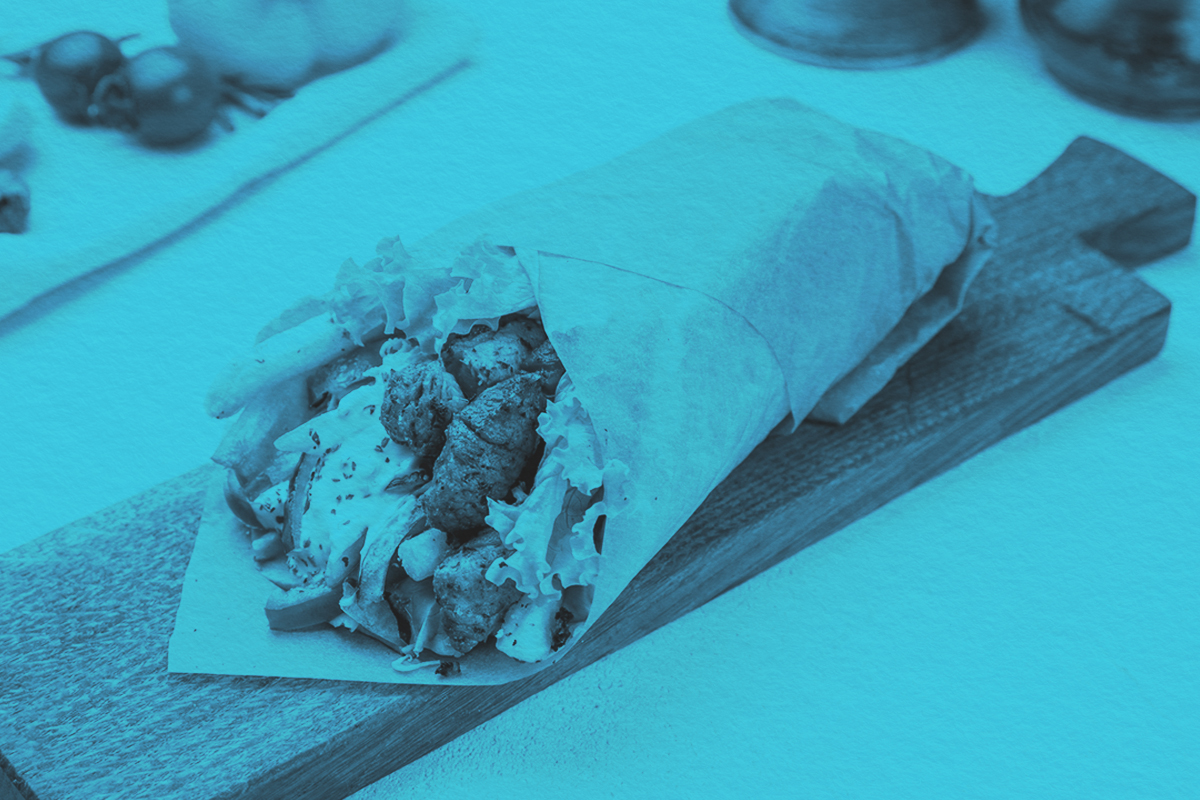
One of the best ways to relax on a lazy weekend is with a Food Network marathon. Watching these shows is not only a good way to decompress, but also helpful in expanding your culinary vocabulary. You might learn about a new ingredient to try in a recipe or hear your favorite celebrity chef use a term that you end up incorporating into your own vernacular. Here are 30 culinary words and phrases pulled straight from the kitchens of popular cooking shows.
Mise en place is French for “to put in place,” and it’s a preliminary step that involves cutting and sorting ingredients prior to cooking. This process allows a chef to have everything prepared in advance so that the actual cooking is more efficient.
A favorite term of TV chef and talk show host Rachael Ray, “spoonula” refers to a curved spatula. It can perform the stirring and spreading tasks a normal spatula can, but as an added benefit, the curved nature of the utensil makes it easy to scoop out food bits from the bottom of any jar.
Fans of The Great British Bake Off know that “soggy bottoms” are an absolute nightmare for bakers. This term refers to any underbaked base on a pie, tart, or similar pastry, often due to the wet filling seeping into the crust.
The surest way to avoid a dry turkey on Thanksgiving is by basting it, a process that involves soaking up and reapplying the juices to the meat as the cook progresses. This prevents the bird from drying out and becoming too chalky.
Giada De Laurentiis — star of the smash hit show Giada at Home — will be the first to tell you that al dente is the best way to prepare pasta. Al dente is Italian for “to the tooth,” and it means the pasta maintains a firm texture without being overly hard or mushy.
French chefs such as Jacques Pépin are familiar with a technique called “chiffonade.” This comes from the French chiffon, referring to fine adornments used by women in the 18th century. The knife skill involves slicing herbs or greens into long, thin ribbons.
While it’s not explicitly a cooking term, fans of The Bear have heard chefs yell “heard” while in the kitchen. This is another way to say “understood” and convey you got the message, which is particularly helpful in loud, busy kitchens.
Not to be confused with boiling something, “blanch” is an adjacent term that refers to briefly cooking food in rapidly boiling water and then dipping it into cold water to stop the cooking process. Chefs may commonly blanch nuts or fruit to help remove the skin.
Any chef worth their muster knows how to deglaze a pan, by adding wine or stock to a hot pan to loosen browned bits of food. Those caramelized bits (called “the fond”) are packed with flavor, and after the deglazing they can be mixed into a sauce for added depth.
To emulsify something in the kitchen means to create a smooth mixture of multiple ingredients that normally wouldn’t combine so easily. Mayonnaise is an emulsion of oil, egg yolk, and an acidic agent such as vinegar or lemon juice.
If you’ve ever watched a show centered around British chefs — for instance, Masterchef UK — you may have seen them prepare an aubergine-based dish. Americans will recognize the main ingredient as an eggplant.
Not to be confused with the musical instrument known as a “mandolin,” a mandoline is a kitchen tool that’s perfect for slicing thin strips of food. Many people use mandolines to portion ingredients like potatoes and zucchini into equally sized strips to ensure an even cook all around.
If you hear someone in the kitchen yell “eighty-six,” it means that a menu item is no longer available. During busy dinner services, restaurants may have to eighty-six specials or popular dishes as they run out of ingredients.
Baking shows commonly refer to an ingredient called “shortening,” which is a fat that turns into a solid at room temperature. Adding shortening to flour results in a crumbly, flakier crust by reducing the elasticity of the dough.
Active kitchens are full of people moving in every direction, which can result in disastrous collisions and spills if people aren’t careful. That’s why you’ll hear many chefs yell “behind” to alert fellow chefs of their presence when walking behind someone, or “corner” when turning a blind corner.
To dredge up a ship means to remove it from the seabed, but in the context of cooking, “dredge” means something entirely different. Dredging involves coating a food in a dry ingredient like flour or breadcrumbs, usually prior to frying it or cooking it over high heat. This helps seal in moisture and results in a crispy exterior.
This term is French for “under chef,” as sous chefs serve as the main assistants in all aspects of food preparation. Every great TV chef has a sous chef working under them behind the scenes, providing the support that’s essential to run an efficient kitchen.
A pinch of salt is often added to a dish at the end of cooking to perfect the flavor. But it’s not just any old pinch. To chefs, a pinch is a precise measurement — one-sixteenth of a teaspoon, to be exact. Furthermore, a dash is one-eighth of a teaspoon and a tad is one-fourth.
What some TV chefs call “butterfly,” others may call “spatchcock.” Both are terms used in reference to cooking poultry — the method involves cutting into the backbone and laying the bird flat so that it cooks more evenly. The term “butterfly” comes from the fact that the bird will look vaguely like a set of butterfly wings.
No three-hole punch necessary here. A culinary binder is essential for keeping ingredients adhered to one another. For instance, egg is a binder in a meatball recipe, as the wetness keeps the meat and breadcrumbs stuck together so the meatball doesn’t fall apart during cooking.
This popular Mediterranean paste is made from peppers, spices, garlic, and olive oil, resulting in a decadent spread full of flavor and heat. You can mix harissa into a falafel recipe, or spread it onto a lamb chop for some incredible depth of flavor.
Coined by poet Edward Lear in 1871’s “The Owl and the Pussycat,” the term “runcible spoon” describes a fork that’s curved like a spoon and contains three broad prongs (imagine a spork with an edge for cutting). Perhaps it doesn’t get a lot of traction while cooking, but toss one of these in your lunchbox or keep it in the car for emergencies.
While the bright lights on a cooking set are sure to make anyone perspire, that’s usually not what TV chefs mean when they say “sweat.” This term often refers to putting veggies and a little bit of oil over heat and stirring to make any liquid evaporate, thus making them tender.
The macerating process brings out the flavor of fruits and vegetables by soaking them in a liquid (water, citrus juice, vinegar, etc.). For instance, you may put berries into a bowl of citrus and sugar, let them soak, then add the macerated mixture into a pie.
Yelling “fire” in a crowded kitchen is different from yelling it inside a packed theater. Any chef who hears the term “fire” knows to get to work, as it means to begin cooking a dish ASAP so that it can be delivered quickly to the customer.
British celebrity chef Gordon Ramsay might use the word “coriander,” but Americans will know the leafy green herb as “cilantro.”
Compared to a cleaver or bread knife, a paring knife is a smaller tool that often measures less than 4 inches long. Its primary purpose is performing precise tasks, such as peeling fruits and veggies or deveining shrimp.
On his show No Reservations, the late, great Anthony Bourdain traveled around the world to sample the best international cuisine. One of his favorite places to visit was Vietnam, where locals enjoy a delicious soup called phở (pronounced “fuh”). A big bowl of phở usually features a hearty beef broth filled with noodles, meats, and vegetables.
A French term that translates to “mouth amuser,” an amuse-bouche is a little bite of food meant to tantalize the palate at the start of a dining experience. Competitors on Iron Chef might prepare an amuse-bouche for the judges to showcase their creativity and tease upcoming flavors.
The term “broken sauce” may not be as literal as a glass shattering into pieces, but it can be equally distressing. It references when the liquid and fatty components of a sauce separate, thus ruining the entire thing. This often happens when making hollandaise sauce, for example, as the oils may separate from the egg yolk, resulting in a sauce that’s grainy instead of creamy.





















